|
|||
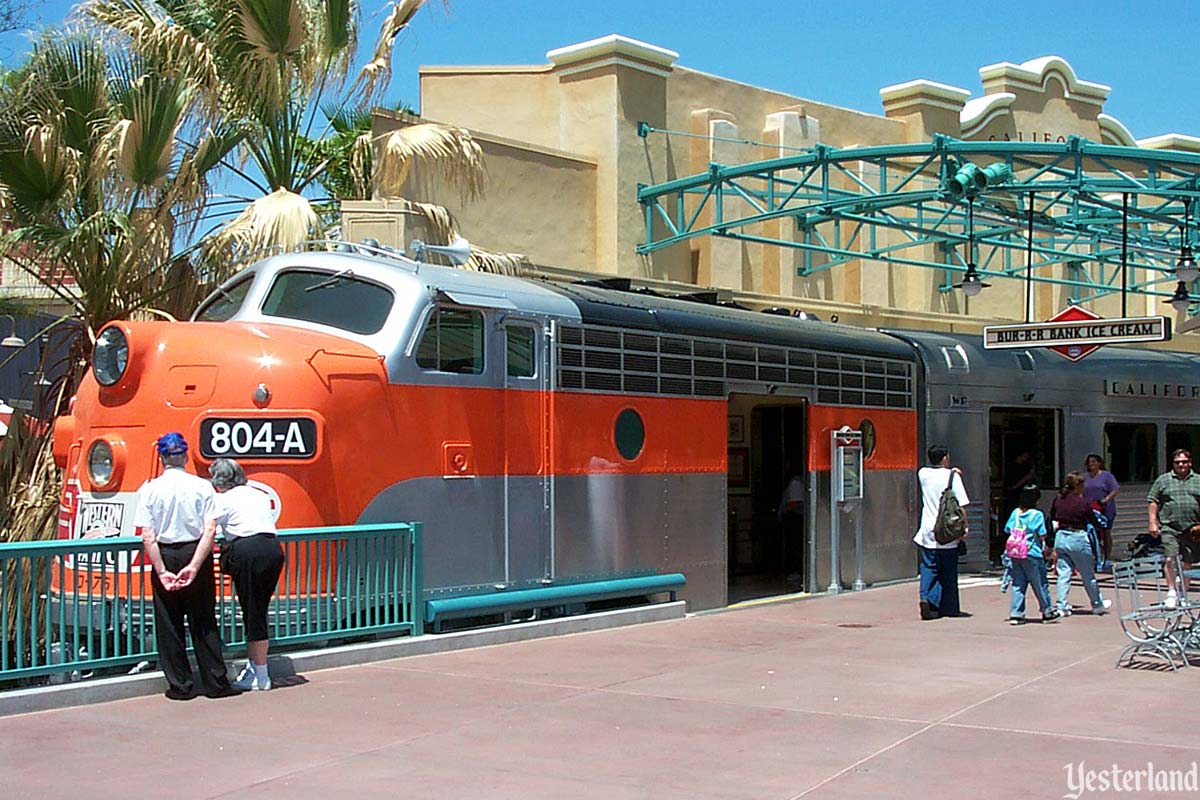
Photo by Tony “WisebearAZ” Moore, 2001 |
|||
|
|
|||
|
Trains and theme parks are a perfect match. At Disneyland, real steam locomotives pull open-air passenger coaches around the perimeter of the park—complete with a trip into the world of dinosaurs. At Knott’s Berry Farm, guests enjoy rides in historical coaches, often pulled by the restored “Old 41” locomotive built in 1881. California Adventure has a train too. It’s the California Zephyr. This sleek, streamlined beauty represents a different era than those steam trains. |
|||
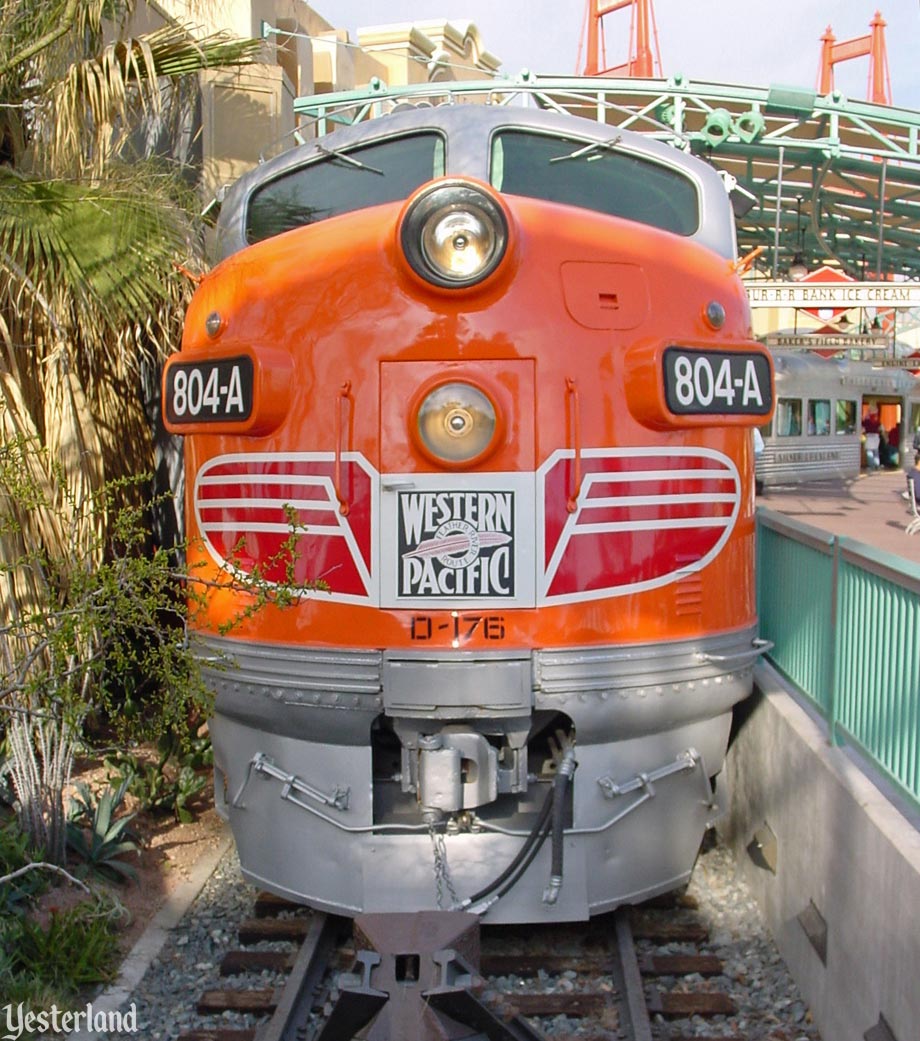
Photo by Allen Huffman, 2002 Cab of the park’s California Zephyr |
|||
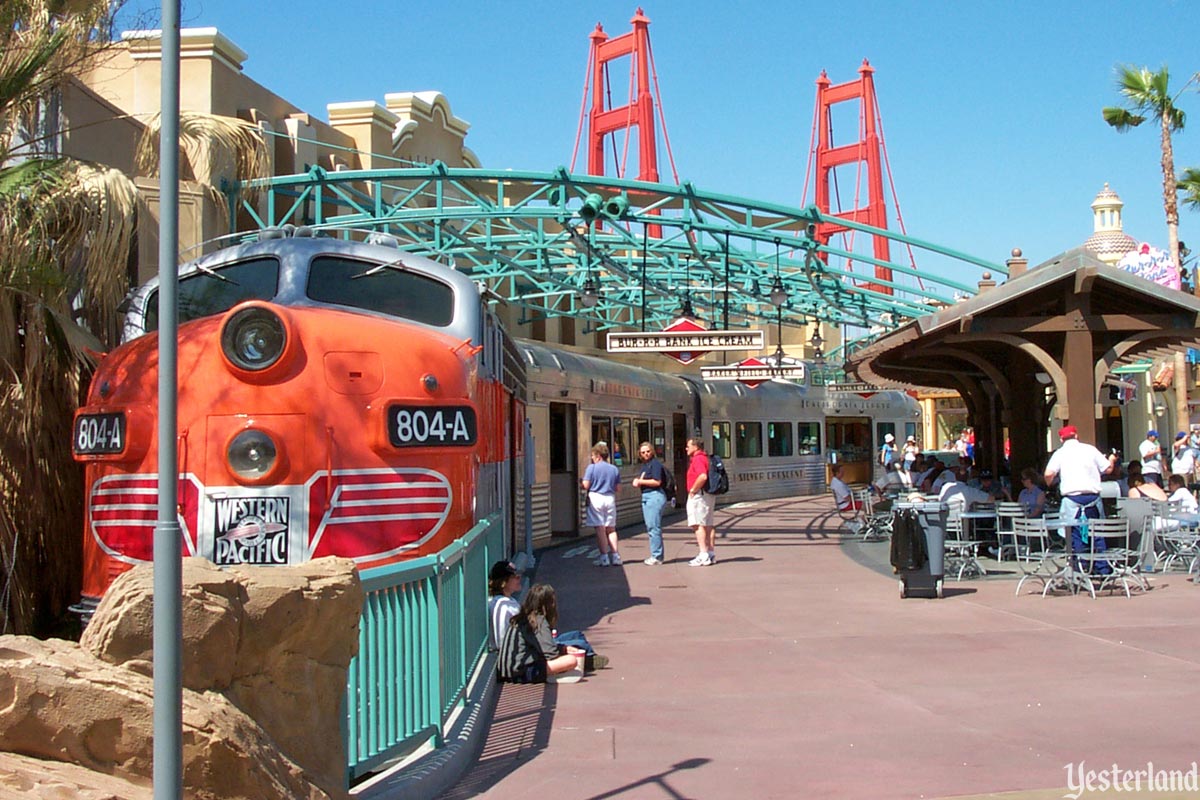
Photo by Tony “WisebearAZ” Moore, 2001 With the Golden Gate Bridge |
|||
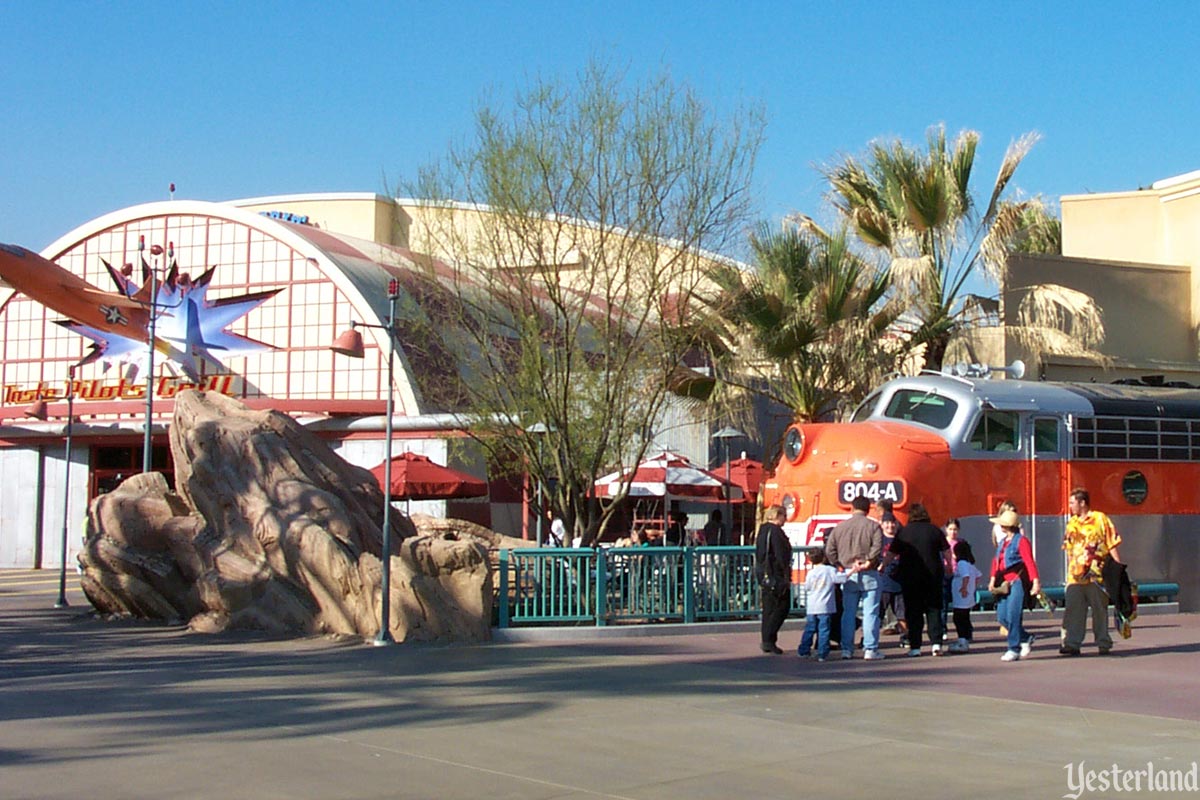
Photo by Tony “WisebearAZ” Moore, 2001 With Condor Flats and the Taste Pilots’ Grill |
|||
|
Although Amtrak has a train called the California Zephyr traveling between the San Francisco Bay Area and Chicago, the train here at the park looks like the fabled California Zephyr of the 1950s and 1960s. The mighty diesel locomotive is painted in the colors of the Western Pacific Railroad, one of the three railroads that operated the California Zephyr back then. The number on the cab—804-A—was the number on the final westbound California Zephyr from Chicago when it arrived in Oakland on March 20, 1970. |
|||
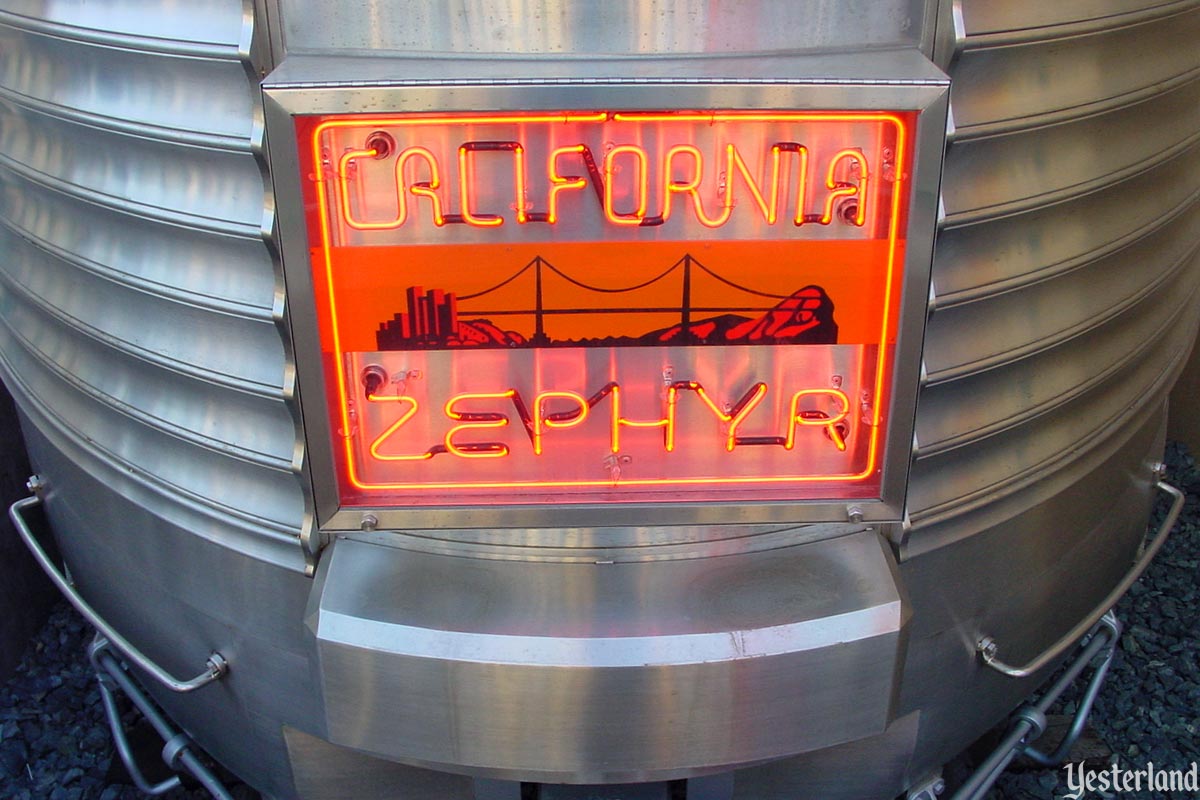
Photo by Allen Huffman, 2002 Neon on the observation car at the rear of the train |
|||
|
The two stainless steel coaches of this California Zephyr are in the tradition of those manufactured by The Budd Company of Philadelphia, Pennsylvania. The rear car is a vista dome observation car. Just think of the great view. |
|||
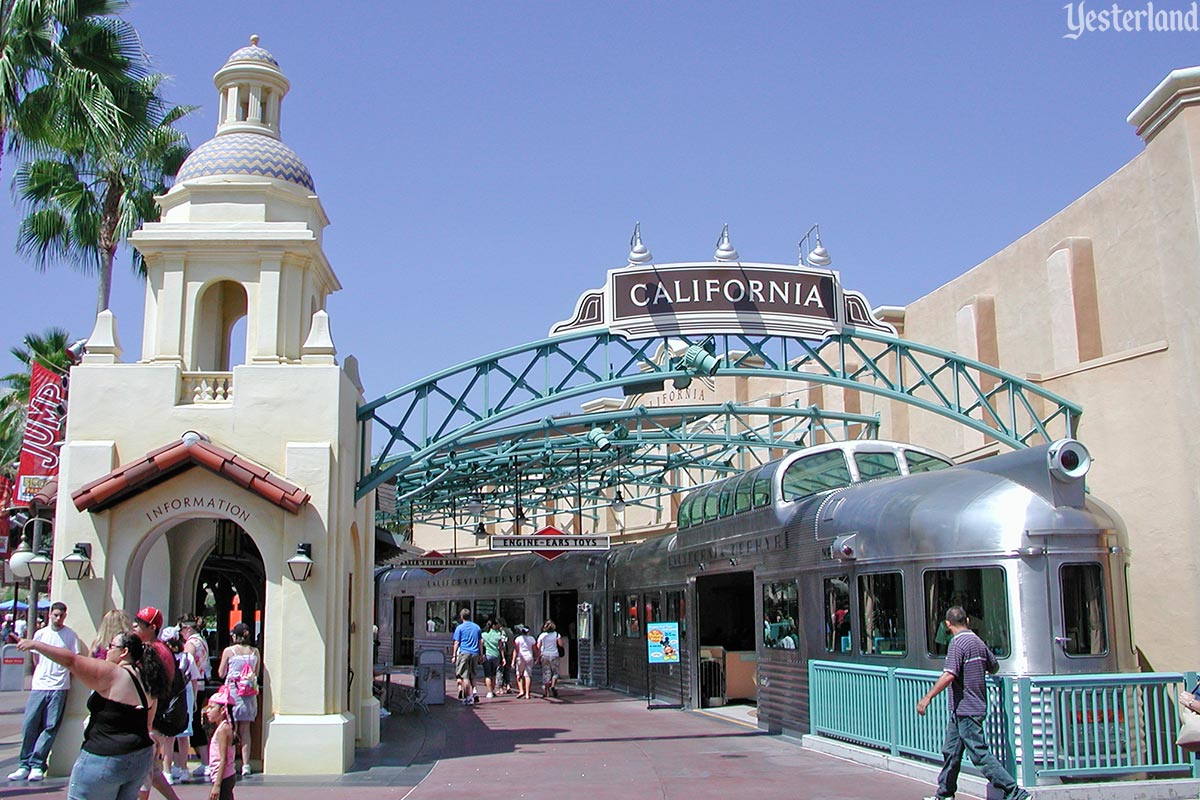
Photo by Werner Weiss, 2002 Information kiosk at the railroad station |
|||
|
You’re in luck. The California Zephyr is waiting for you at the station. The station’s Spanish Mission style tower is inspired by the Santa Fe Depot in downtown San Diego. Are you ready to board? Actually, there’s no hurry. The train won’t leave without you. |
|||
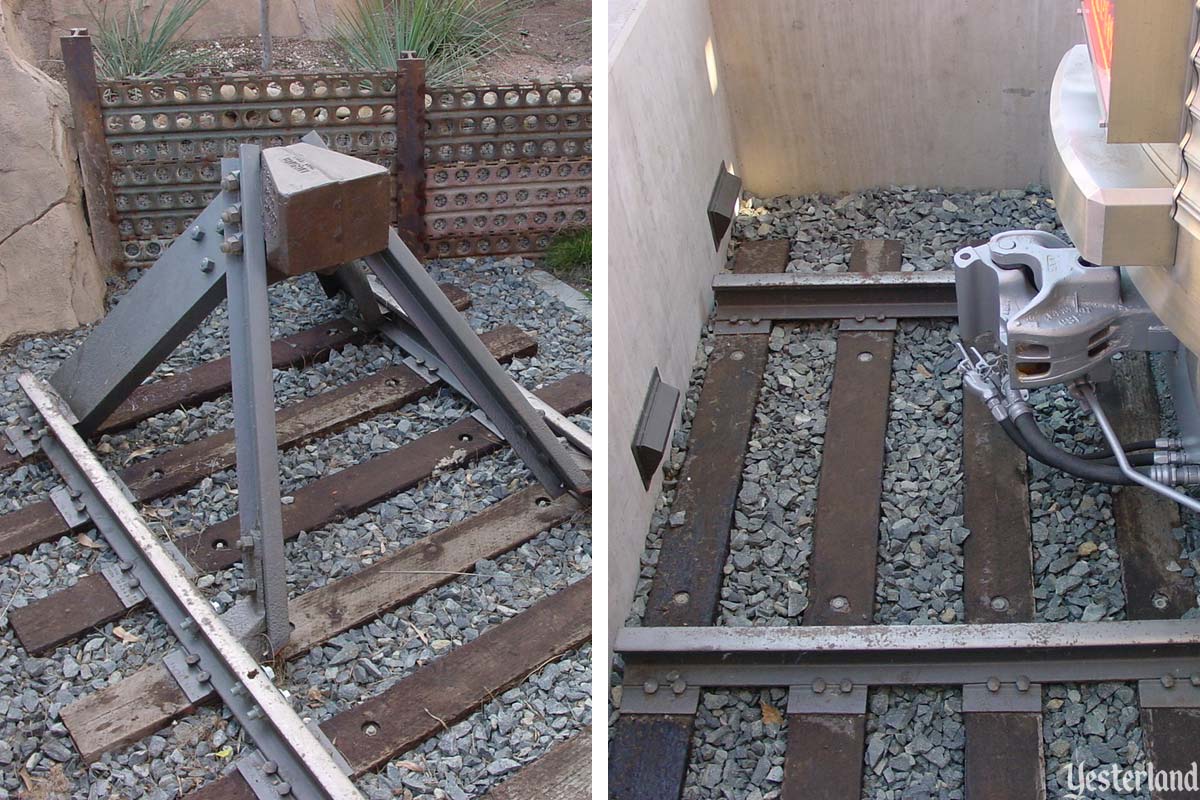
Photo by Allen Huffman, 2002 Track in front of the train (left) and track behind the train (right) |
|||
|
There’s a big difference between the California Zephyr and the trains at Disneyland and Knott’s Berry Farm. The California Zephyr doesn’t move. For one thing, it doesn’t have an operational locomotive. But, even if it did, there’s essentially no track. |
|||
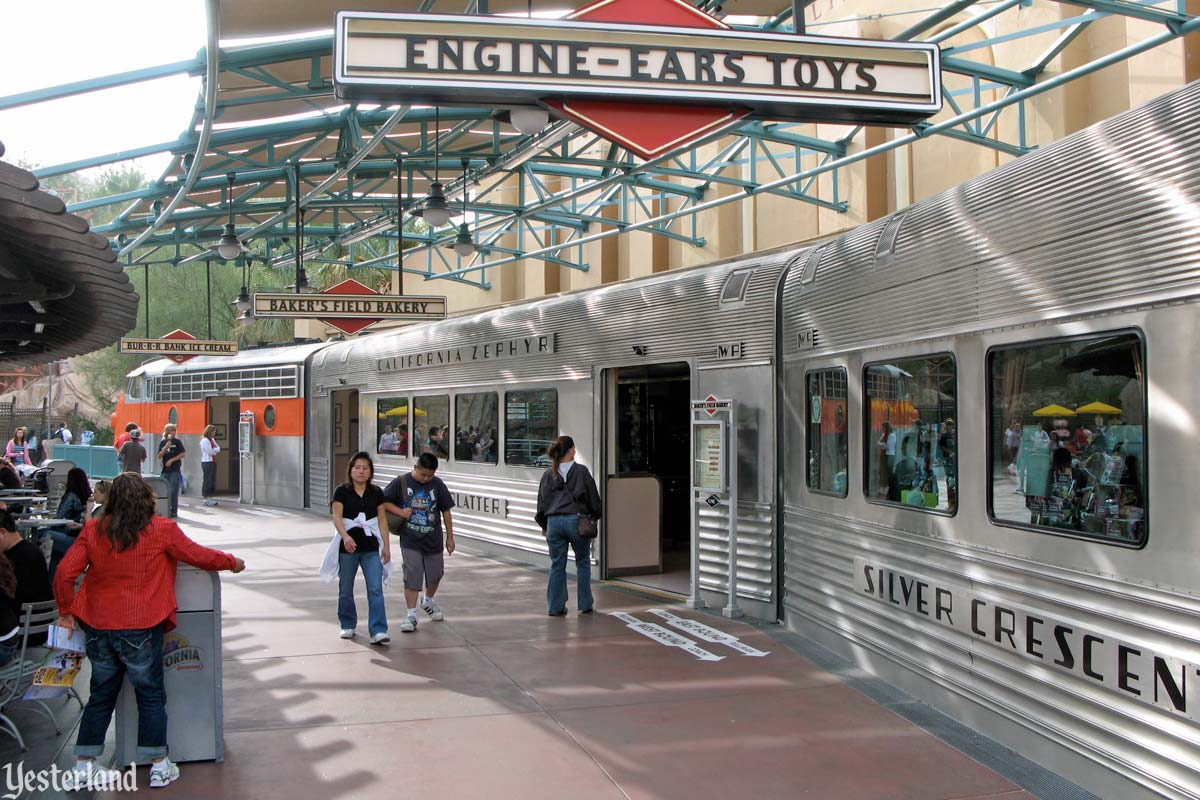
Photo by Werner Weiss, 2010 Two eateries and a store |
|||
|
It’s not a real train. The California Zephyr is a faux train that serves as a clever building façade, forming entrances to three shops. The locomotive is the entrance to Bur-r-r Bank Ice Cream, Behind it, the “Silver Platter” dining car is the entrance to Baker’s Field Bakery. At the rear of the train. the “Silver Crescent” vista dome observation car is the side entrance to Engine-Ears Toys. |
|||
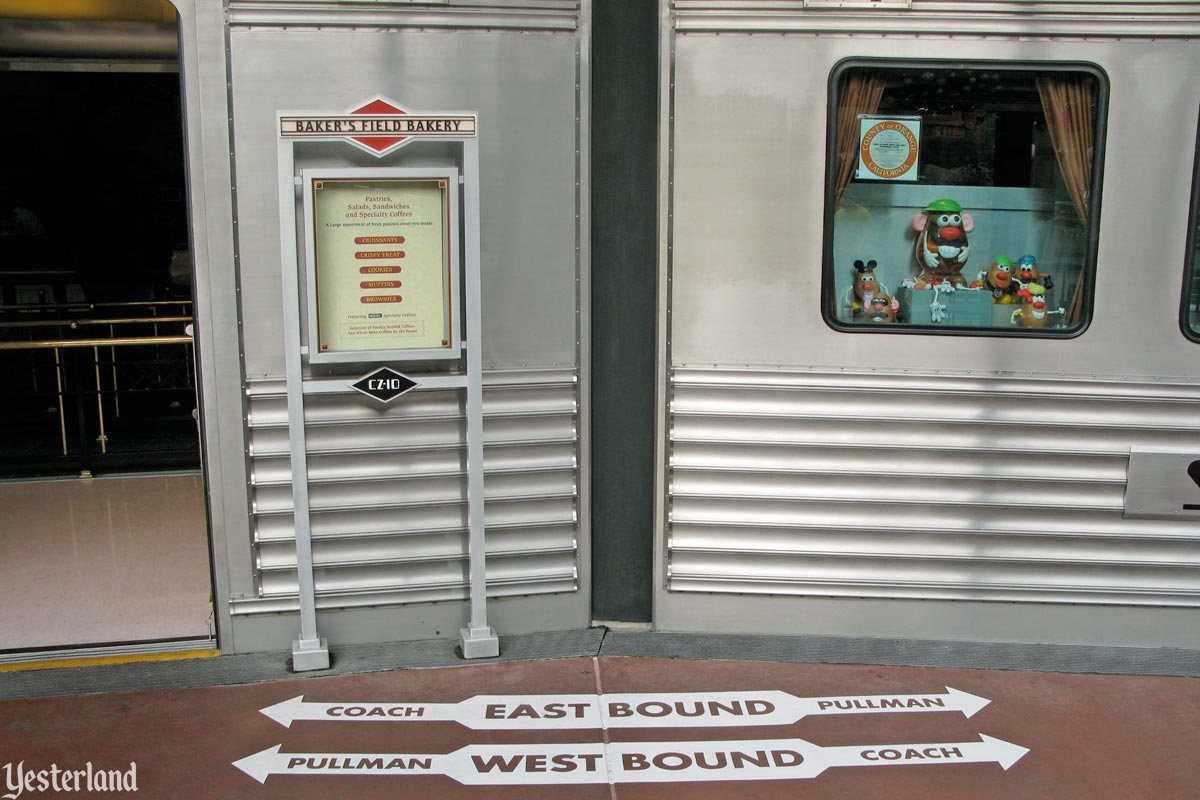
Photo by Werner Weiss, 2007 Train platform directional signage |
|||
|
If you’re looking for ice cream, coffee, baked goods, toys, and other souvenirs, you’ve come to the right place. But if you’re looking for a train ride, you can’t get one here. |
|||
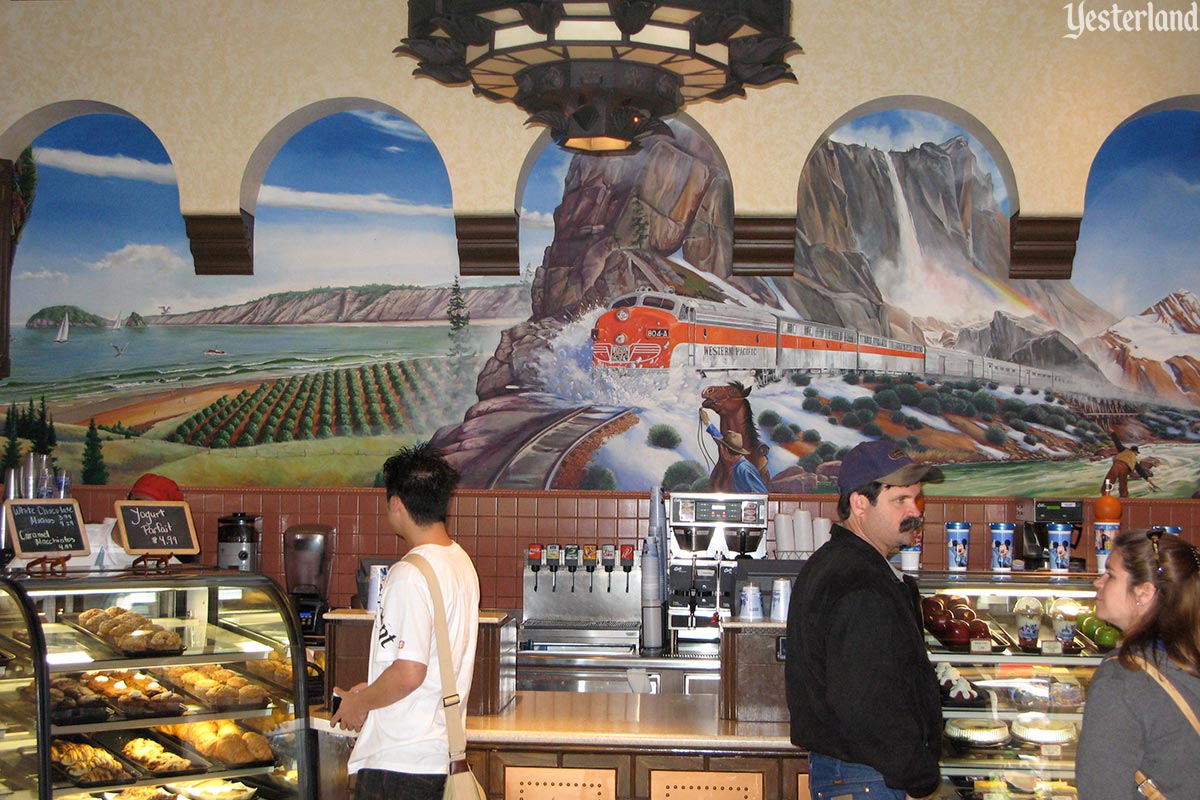
Photo by Werner Weiss, 2007 Inside Baker’s Field Bakery |
|||
|
A mural behind the counter at Baker’s Field Bakery suggests how wonderful the view must have been as the California Zephyr crossed the Sierra Nevada Mountains. The train in the mural is longer than the train outside, but the locomotive should look familiar. |
|||
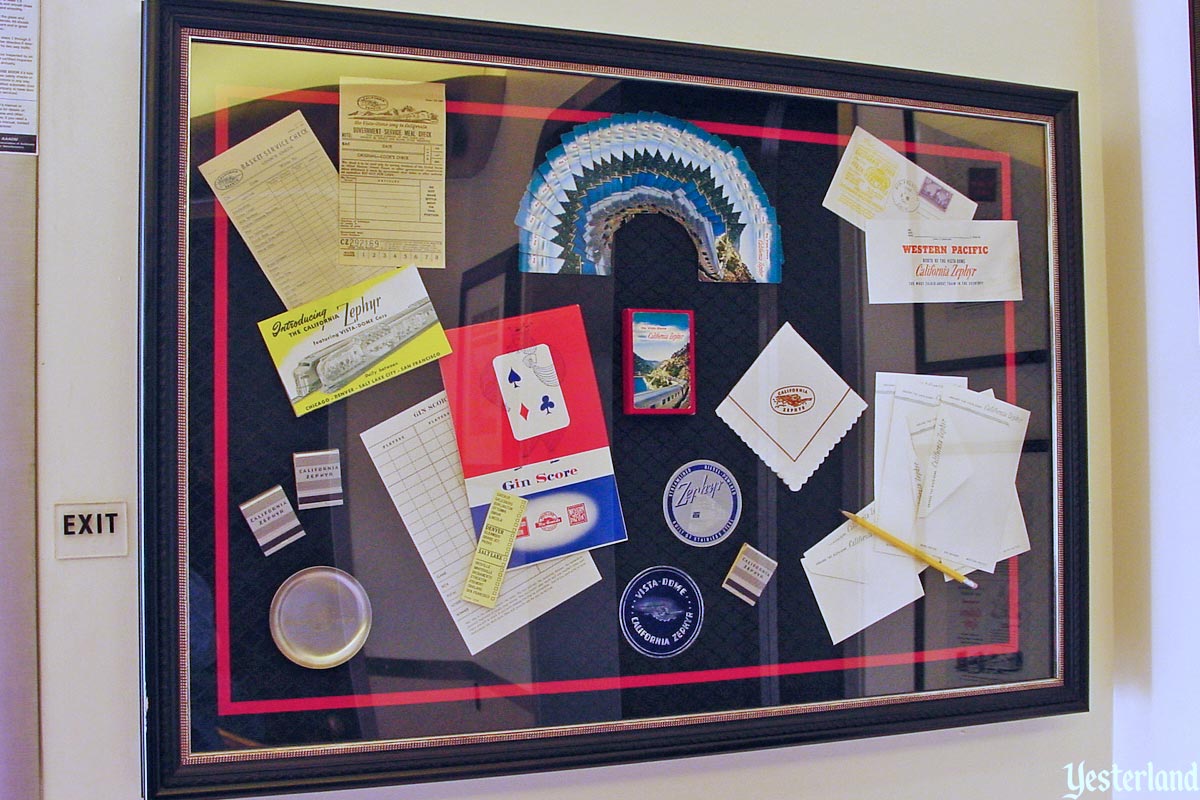
Photo by Allen Huffman, 2002 Historical memorabilia from the real California Zephyr |
|||
|
Don’t miss the display of artifacts from the real California Zephyr. When you’re at a theme park running from ride to ride, it’s easy to miss such details. But these pieces are worthy of being displayed in a museum. |
|||
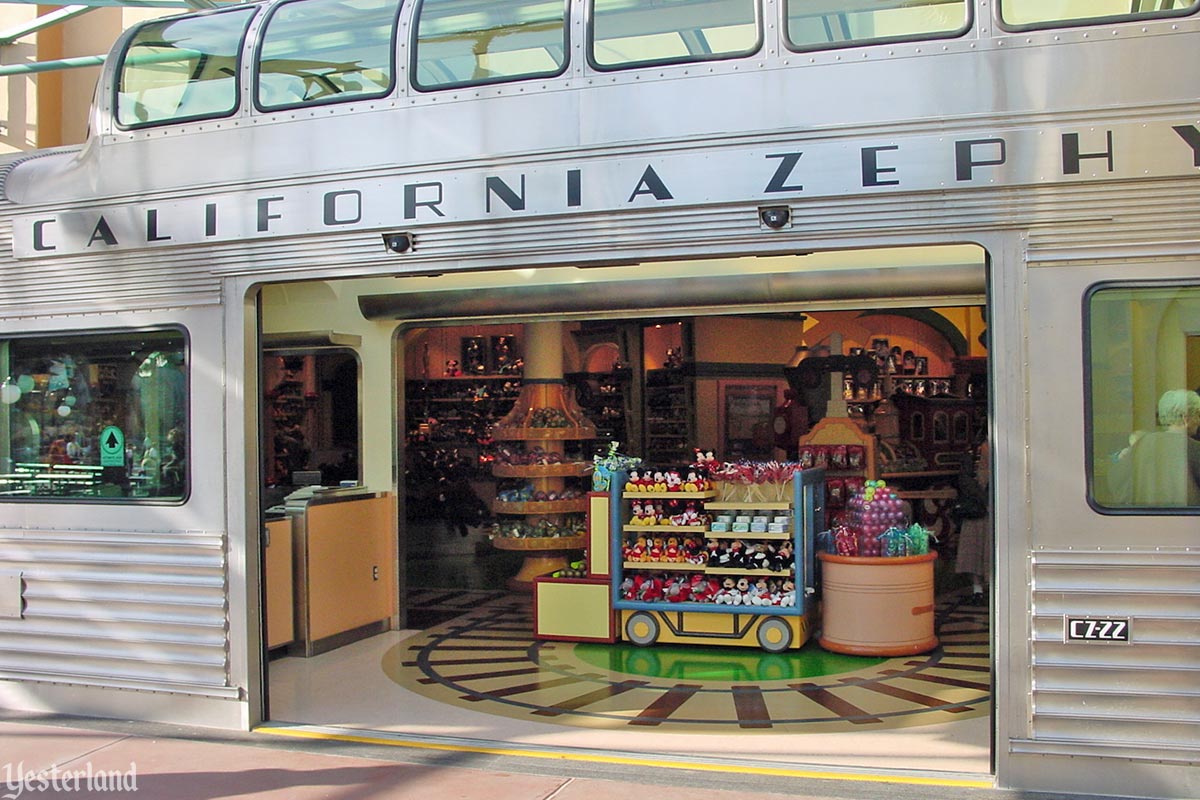
Photo by Allen Huffman, 2002 Wide entrance to Engine-Ears Toy through the vista dome observation car |
|||
|
Step inside Engine-Ears Toys. It’s the second largest shop in the whole park. It may seem odd that the train is facing the way it is. Wouldn’t the engine make a better entrance to Engine-Ears Toys? And wouldn’t it be great if there were seating in the observation car so that you could savor your ice cream while enjoying the fantasy of traveling aboard a legendary train? |
|||
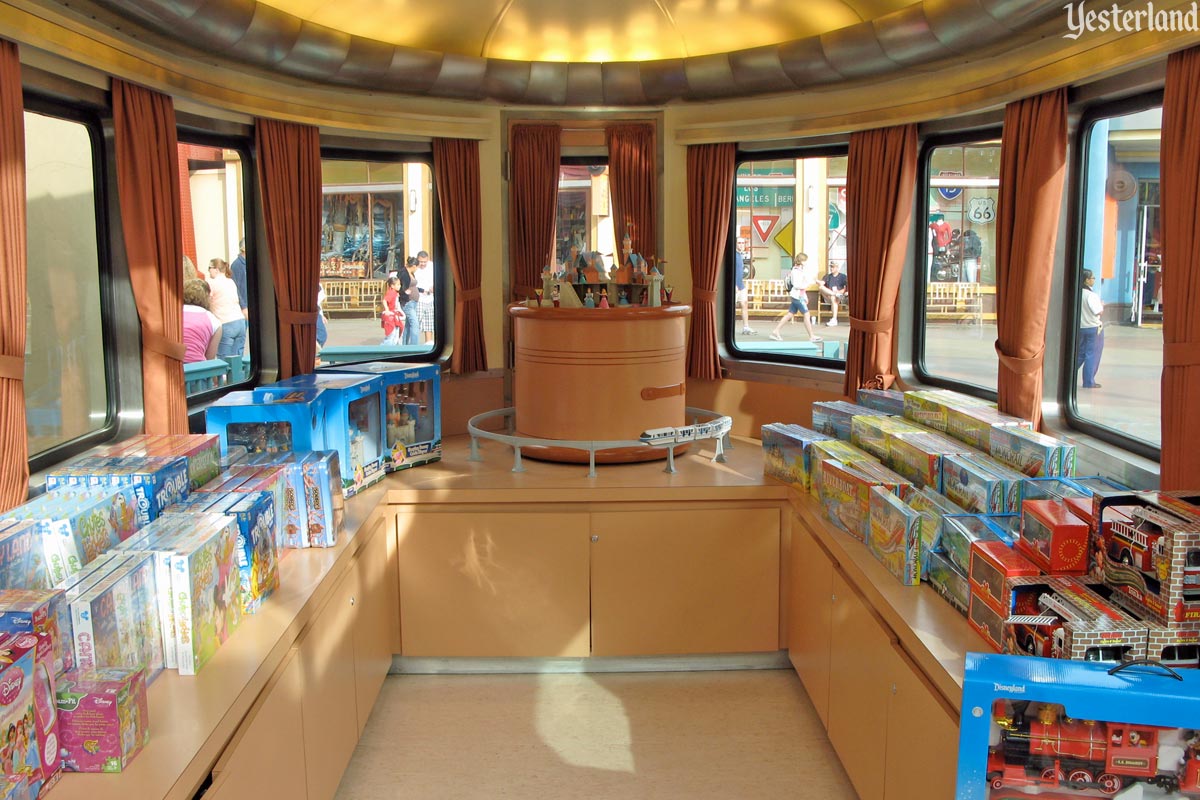
Photo by Werner Weiss, 2007 Toys for sale inside the vista dome observation car |
|||
|
There would only be one problem with having the engine facing the park’s biggest store, Greetings from California. Because there can be no track heading into the busy walkway, it would weaken the illusion that this is a train ready to depart for Chicago, and not just a building façade. Of course, there’s no track in front of the engine facing the other way either, but it’s not quite as obvious. |
|||
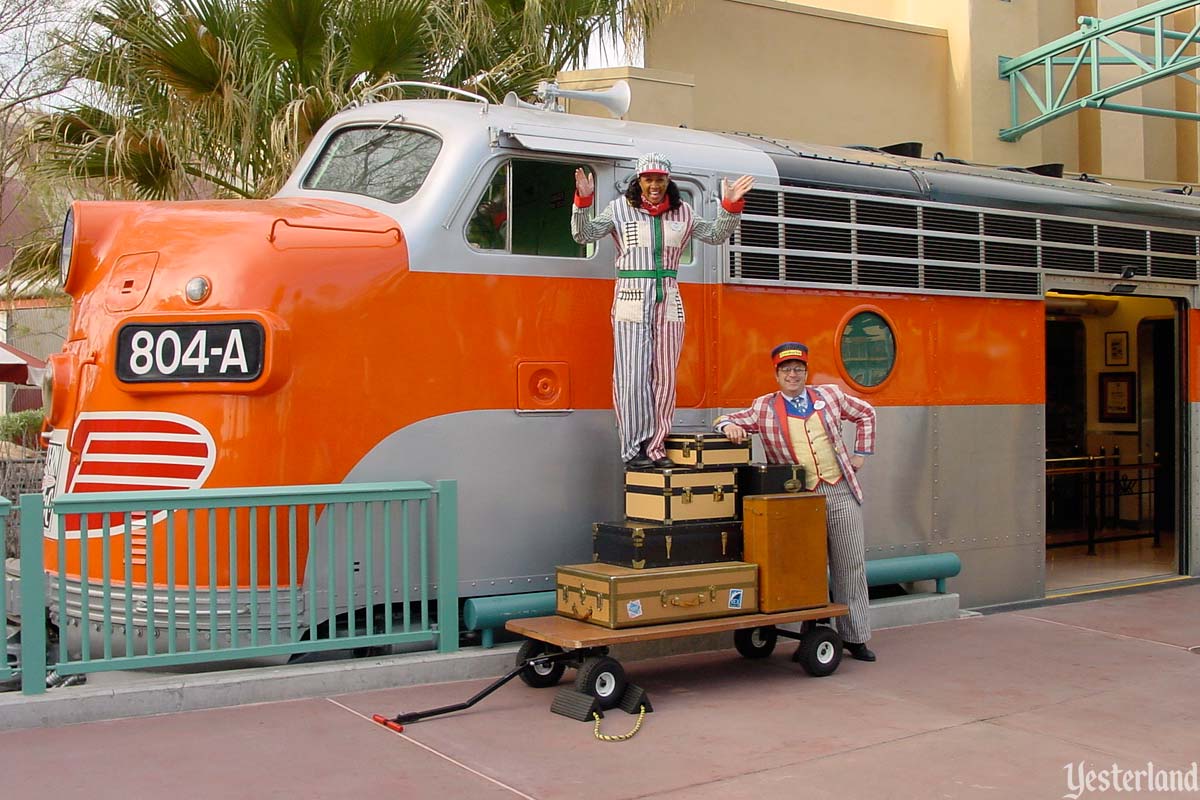
Photo by Allen Huffman, 2002 Chugga Chugga Chugga |
|||
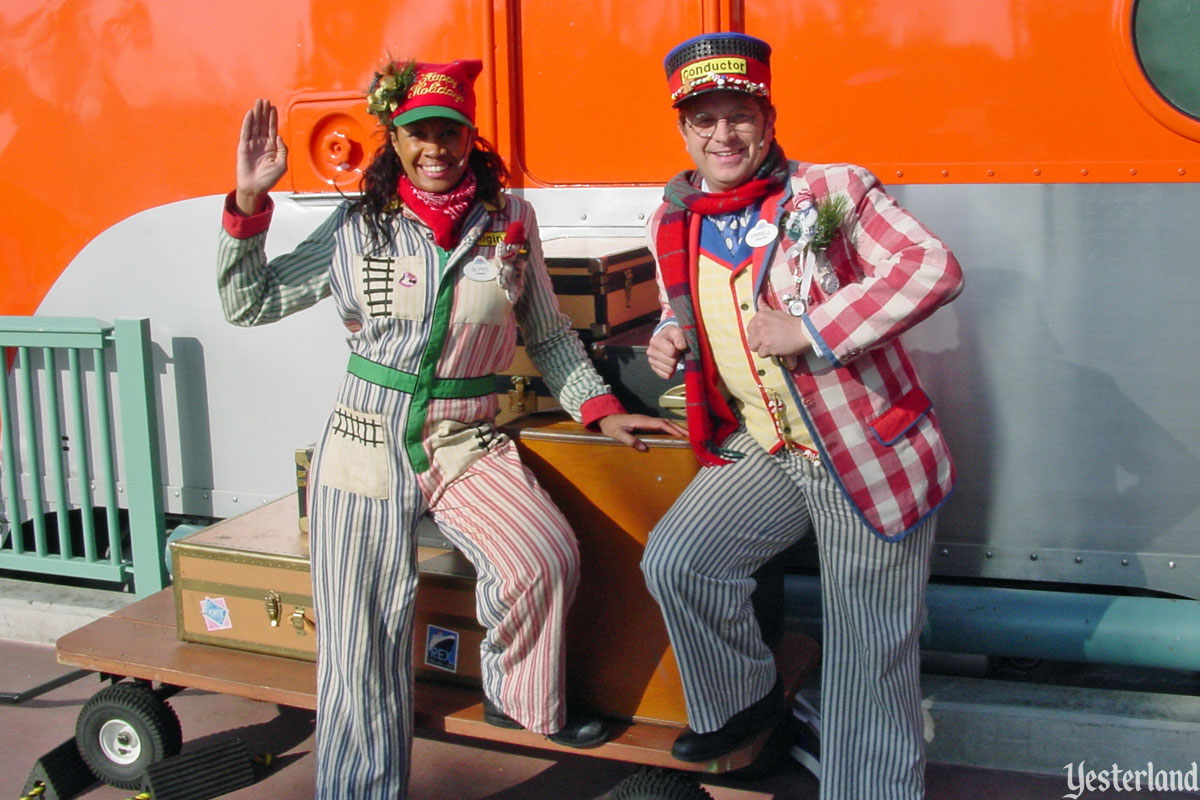
Photo by Tony “WisebearAZ” Moore, 2001 The stars |
|||
|
The engine of the California Zephyr serves as the setting for Chugga Chugga Chugga. A conductor and an engineer share railroad stories and songs. |
|||
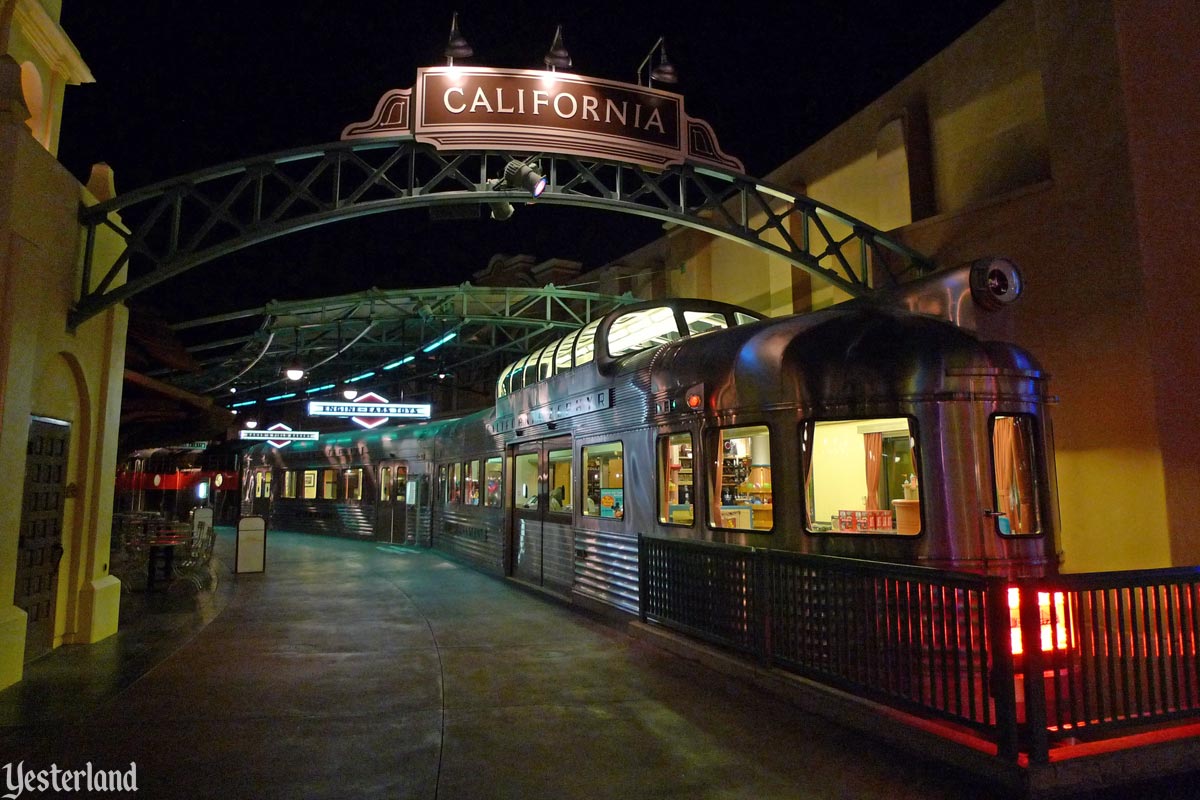
Photo by Allen Huffman, 2009 California Zephyr at night |
|||
|
Okay, so it’s not a real train. But it’s one of the best designed and executed elements of Yester California Adventure. |
|||
|
|
|||
|
The California Zephyr and its railroad station were part of Disney’s California Adventure when the park opened in February 2001. Chugga Chugga Chugga, the little show that used the California Zephyr as its backdrop, had a short run in 2002. Only the locomotive cab was an actual historical artifact. Although Disney’s Imagineers numbered the train as 804-A, it’s not the actual 804-A that rolled into Oakland on the final run of the old California Zephyr in 1970. (That locomotive was wrecked in 1972.) The origin of the locomotive cab has been a subject of discussion among rail enthusiasts, with conflicting explanations. Steve DeGaetano, author of Welcome Aboard the Disneyland Railroad! and From Plantation to Theme Park: The Story of Disneyland Railroad Locomotive No. 5, the Ward Kimball, tracked down the real story. The F7Au class GFA-17a locomotive was originally built in 1952 by General Motors Diesel, the Canadian subsidiary of the Electro Motive Division of General Motors, as locomotive 9104. It operated for the Canadian National Railroad. In 1973, it was rebuilt as number 9165 and continued to be used by Canadian National until finally being retired in 1989. Disney’s Imagineers found it at National Railway Equipment in Dixmoor, Illinois, where it had been since 1990. When it arrived in California from Illinois, the locomotive cab was a sad, battered remnant of a once great locomotive. The cab was lovingly restored to look like a Western Pacific EMD F7 locomotive. The rear of the locomotive and the stainless steel coaches were skillfully designed and built for the park to form a complete train—although a rather short one. |
|||
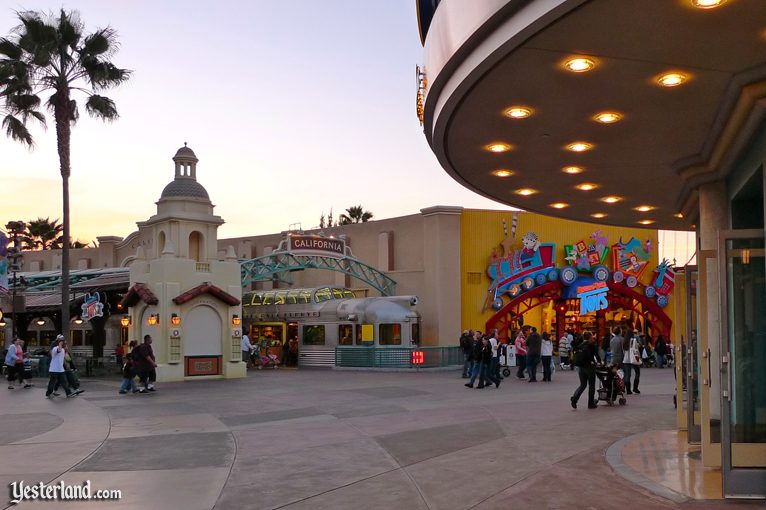
Photo by Allen Huffman, 2009 The odd use of two entirely different styles for Engine-Ears Toys |
|||
|
While the rest of the park’s entrance complex made no effort to recreate a historical time period and California location, the faux train and the information kiosk “tower” at least made an effort. Unfortunately, despite the excellent work that went into the train, the overall effort came across as half-hearted. The information kiosk, train platform, and the boxy retail building behind the train failed to look like a real railroad station. It didn’t help that the other façade of Engine-Ears Toys, just around the corner from the observation car, consisted of gaudy graphics attached to a large yellow wall. The “tower” failed to look like a real railroad station tower because it was too short and not attached to a station building. |
|||
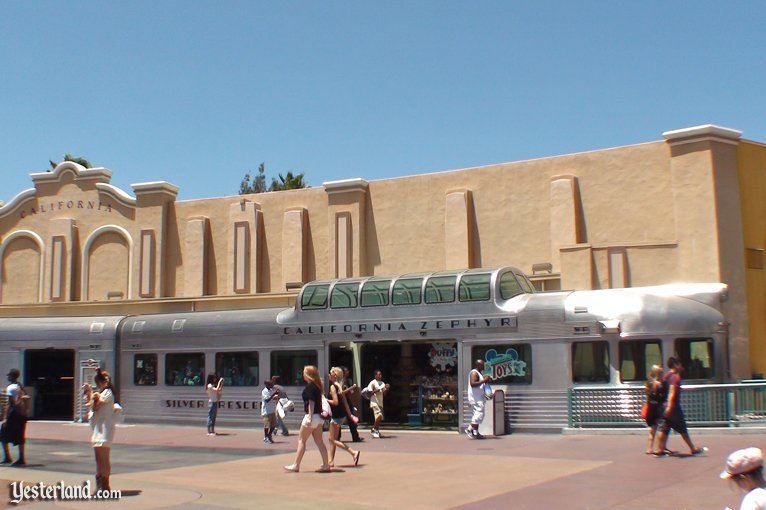
Photo by Chris Bales, 2011 The California Zephyr in its final months, after the removal of the “tower” and shade structures |
|||
|
In 2007, Disney announced that over a billion dollars would be invested to improve Disney’s California Adventure. Part of the plan called for transforming the entrance complex into Buena Vista Street, a commercial street in a Los Angeles neighborhood of the 1920s, when young, ambitious Walt Disney first arrived from Kansas City. Even though Walt Disney arrived in Los Angles by train, there was no way to pass off the California Zephyr that ran from 1949 to 1970 as the old California Limited of the 1920s. Also, if the faux train looked lost in the hodge-podge of the original Sunshine Plaza entrance area, it would have looked even more out-of-place had it remained as part of the carefully designed Buena Vista Street. A commercial street in Los Feliz or Atwater of the 1920s would not have had a long-distance train parked on it. After the 2007 announcement, the California Zephyr, Baker’s Field Bakery, Bur‑r‑r Bank Ice Cream, and Engine-Ears Toys lasted almost four more years. Their final day was July 31, 2011 (although the information kiosk and train shed already disappeared back in May 2011). Construction walls went up. The train left the station. |
|||
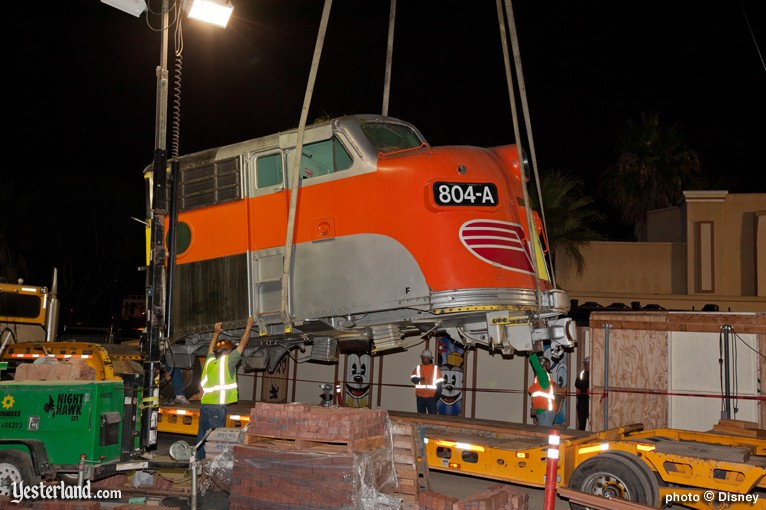
Photo © Disney 2011 Removing the historical part of the train |
|||
|
The Disneyland Resort donated the authentic cab and memorabilia to the Western Pacific Railroad Museum in Portola, California. Disney’s California Zephyr, which had not moved for over a decade, made one more trip—at least the locomotive cab did. It arrived at the museum by truck on August 6, to become part of the museum’s Zephyr Project collection. A Disneyland press release on August 9, 2011, quoted Disneyland Resort President George A. Kalogridis about the donation: “Walt Disney’s love of trains made this donation perfectly fitting. The expansion of Disney California Adventure Park provided the opportunity for us to make this meaningful donation and we are thrilled the train will offer museum visitors and train enthusiasts an immersive experience, much like it did here.” The press release went on to explain how the Western Pacific Railroad Museum would use the donated elements: Visitors to the museum will learn about the history of the famous 1950s passenger train through the donated artifacts, while the recreated locomotive will offer the chance to experience what it was like for engineers to guide the stainless steel Zephyr trains through California’s Feather River Canyon. If locomotive cabs had feelings, this cab should be happier in its new home telling the story of a legendary train—instead of functioning as the entrance to an ice cream shop. |
|||
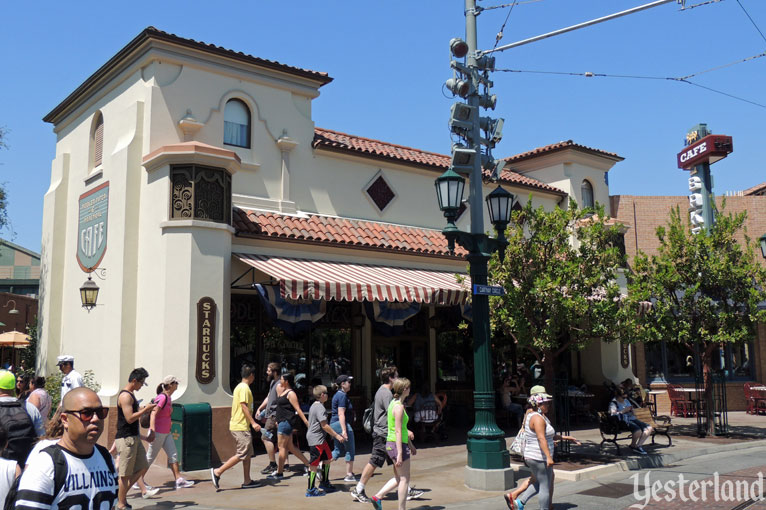
Photo by Werner Weiss, 2015 Starbucks where the California Zephyr used to be |
|||
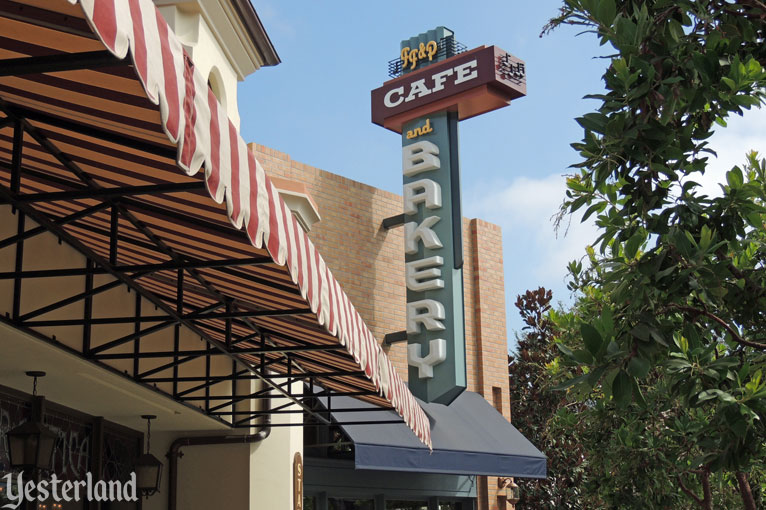
Photo by Werner Weiss, 2013 Sign for Fiddler, Fifer & Practical Café |
|||
|
The former location of the California Zephyr is now the Fiddler, Fifer & Practical Café and Bakery, an elaborately themed Starbucks “owned” by the Silver Lake Sisters and decorated with memorabilia from their entertainment career. |
|||
|
|
Click here to post comments at MiceChat about this article.
© 2011-2021 Werner Weiss — Disclaimers, Copyright, and Trademarks Updated August 6, 2021 |
||
